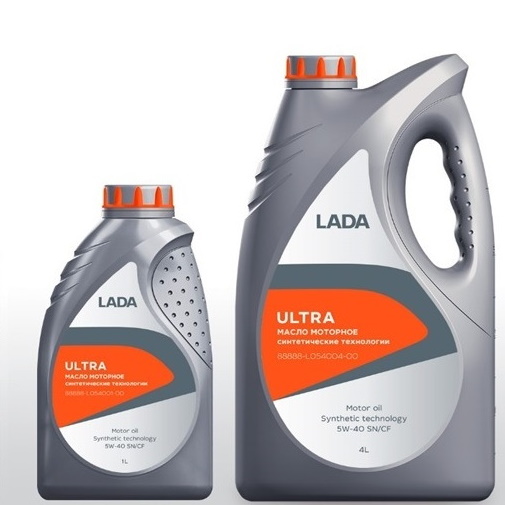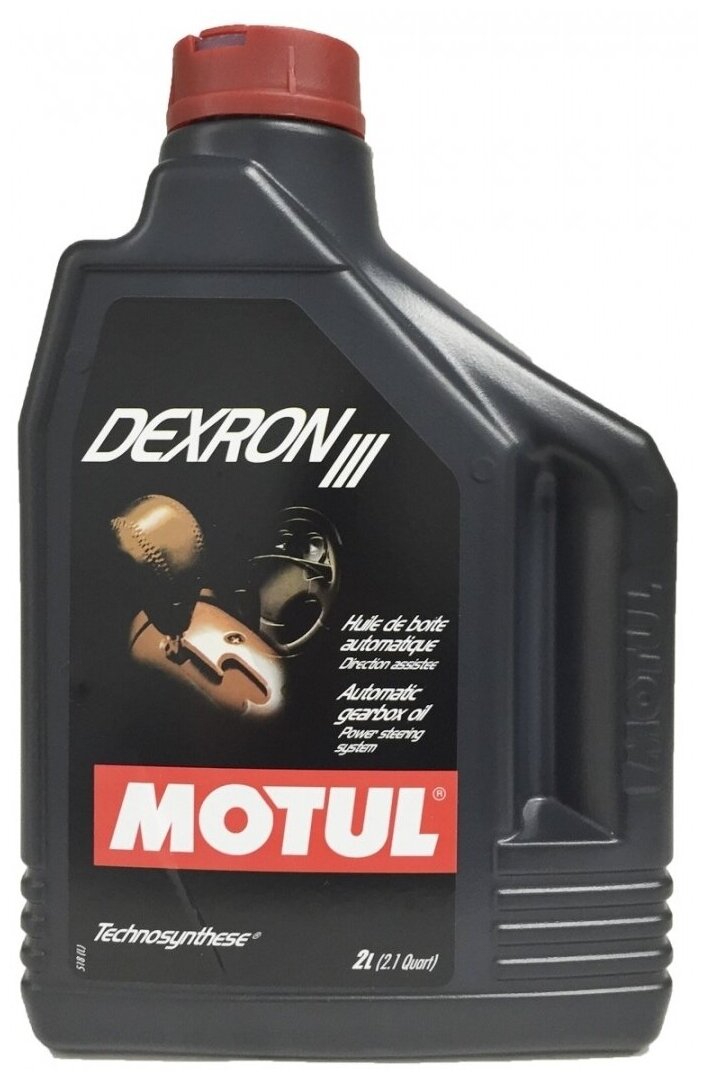
The best oils ATF Dexron 3
Content
The principle of operation of automatic transmission and power steering is based on the operation of fluids such as ATF Dexron 3. Lubricants from different manufacturers are sold under a similar name. Oils vary in composition, characteristics, and performance. Reading the Dextron specification will help you explore the variety and choose the best product.

What is Dexon
With the development of the automotive industry in the middle of the 20th century, automatic transmission oil standards began to appear. The fluid is called Automatic Transmission Fluid - ATF. The standard describes the requirements for the composition of the fluid, based on the design features of the gearbox.
Concern General Motors (GM) was more successful in development than others. The first fluid suitable for all automatic transmissions, Type A fluid, was introduced in 1949. After 8 years, the specification was updated with the name Type A Suffix A.
In 1967, he developed the ATF Dexron type B specification for GM. The automatic transmission fluid consisted of a stable hydrotreated base, received anti-foam, high-temperature and anti-oxidation additives. Warranty mileage between replacements was 24 miles. The oil has been dyed red to make it easier to spot the leak.
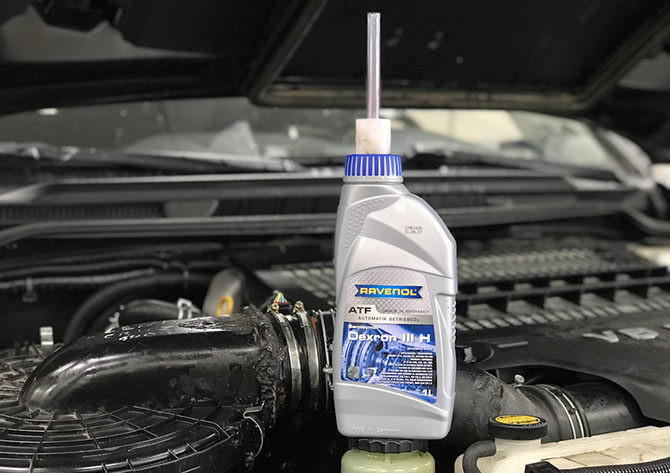
Spermaceti sperm whale was used as a friction additive for the first fluids. Dexron type II C replaced it with jojoba oil in 1973, but automatic transmission parts quickly rusted. After the problem was discovered, corrosion inhibitors were added to the next generation of Dextron II D, but the automatic transmission fluid quickly aged due to its high hygroscopicity.
In 1990, the automatic transmission became electronically controlled, which required a revision of the technical specifications. This is how Dextron II E was born. In addition to adding new additives, the base has changed from mineral to synthetic:
- improved viscosity;
- extended operating temperature range;
- increased resistance to the destruction of the oil film;
- increase fluid life.
In 1993, the Dextron IIIF standard was released. Oil of this type was distinguished by high viscosity and friction properties.
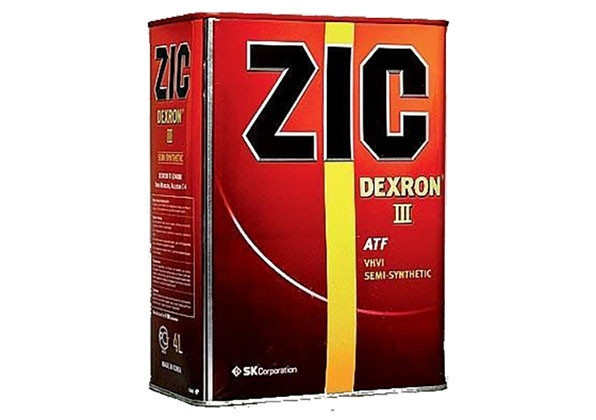
ATF Dexron IIIG appeared in 1998. New requirements for oils have solved problems with automatic transmission torque converter vibrations. ATP is used in power steering, hydraulic systems and air compressors where low temperature fluidity is required.
In 2003, with the release of ATF Dextron IIIH, the additive package was updated: friction modifier, anti-corrosion, anti-foam. The oil has become more stable. The fluid was suitable for automatic transmissions with and without an adjustable torque converter lock-up clutch.
All Dextron IIIH licenses expired in 2011, but companies continue to manufacture products to this standard.
Application area
ATF Dextron was originally developed for automatic transmissions. The oil in an automatic transmission performs different functions: it transmits torque, pressurizes the clutches and ensures proper friction, lubricates parts, protects against corrosion, removes heat. When choosing an ATP, check the product for the Dextron specification.
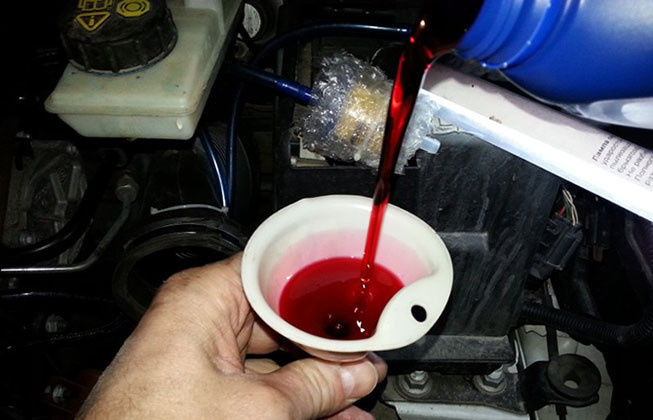
Dextron specifications list the optimum viscosity index for each type of ATP. High-viscosity oils increase the slippage of friction discs, increase the wear of rubbing parts of automatic transmissions. At low viscosity, the protective film on bearings and gears is thin and breaks down quickly. Bandits appear. The seals are deformed. Automatic transmission fluid is leaking.
The working viscosity of ATF Dexron III H is in the range of 7 - 7,5 cSt at 100℃. The indicator guarantees that Dextron 3 oil in automatic transmissions will last a long time without replacement, while maintaining its working properties.
ATF Dexron III H is used in 4- and 5-speed automatic transmissions manufactured before 2006. Boxes are installed on cars, commercial vehicles, buses.

With the expansion of the functionality of the transmission fluid, the scope has also expanded:
- hydraulic systems: power steering, hydrostatic transmission, hydraulic drive, hydropneumatic suspension, hydrobrake system;
- gearboxes for construction, agricultural and mining equipment;
- industrial equipment.
Power steering oil requirements are similar to those for automatic transmissions, so Opel, Toyota, Kia, Geely allow the use of Dexron ATF in power steering. BMW, VAG, Renault, Ford recommend filling in a special power steering fluid - PSF, CHF.
The use of ATP Dextron is divided into climatic zones:
- for regions with temperatures down to -15℃ in winter, Dextron II D is suitable;
- at temperatures down to -30 ℃ - Dextron II E;
- at temperatures up to -40℃ — Dextron III H.
Read Complete and partial oil change in automatic transmission Nissan X-Trail
Dextron transmission fluid operating conditions
The service life of ATF Dexron depends not only on the mileage, but also on the operating conditions of the machine:
- with aggressive driving, frequent drifts, driving on broken roads, ATF Dexron II and III wear out quickly;
- starting without oil heating in automatic transmission in winter causes rapid aging of Dexron 2 and 3;
- due to insufficient fluid filling into the box, pressure drops, a decrease in the working properties of automatic transmission oil;
- excessive consumption of ATP causes foaming of the emulsion. In the automatic transmission, excessive splashes and underfilling of fluid occur;
- Constant overheating of the oil above 90℃ leads to loss of performance.
Manufacturers choose ATF for its viscosity, load capacity, frictional properties, etc., for reliable hydraulic system performance. The marking of the recommended oil type, for example ATF Dexron II G or ATF Dexron III H, is indicated on the design:
- in automatic transmission oil dipsticks;
- on the stove under the hood;
- on the label of the power steering reservoirs.
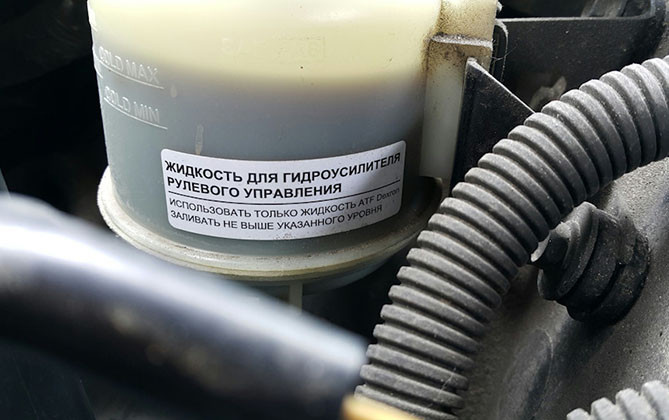
The manufacturer's recommendations must be followed. Here's what happens if you ignore the instructions:
- Transmissions in the automatic transmission will switch with a delay. In a freshly filled liquid, the frictional friction parameters can be underestimated or overestimated. The pucks will slide at different speeds. Hence the increased consumption of ATF Dexron and friction clutch wear
- Loss of smooth gear shifting in automatic transmission. Changing the ratio and composition of additives leads to improper operation of the oil pump. The pressure in the automatic transmission mechanisms will lag behind.
- Pouring synthetic Dextron ATF into the power steering instead of the recommended mineral ATF will wear out the rubber seals. In power steering with synthetic oil, the rubber composition is distinguished by the presence of silicone and other additives.
Forms of issue and articles
Synthetic ATP is produced from hydrocracked petroleum fractions. The composition also includes polyesters, alcohols, additives that guarantee stability at operating temperatures, a dense oil film and long service life.
Semi-synthetic fluids contain a mixture of synthetic and mineral oils. They have good fluidity, anti-foam properties and heat dissipation.
Mineral oils are 90% petroleum fractions, 10% additives. These fluids are inexpensive but have a short shelf life.
The most common dextrons with release forms and article numbers:
ATF Dexron 3 Motul:
- 1 l, art. 105776;
- 2 l, art. 100318;
- 5 liters, art. 106468;
- 20 l, article number 103993;
- 60 liters, art. 100320;
- 208l, art. 100322.
Mobil ATF 320, semi-synthetic:
- 1 l, art. 152646;
- 20 l, article number 146409;
- 208l, art. 146408.
Synthetic oil ZIC ATF 3:
- 1l, art. 132632.
Liqui Moly ATF Dexron II D, mineral:
- 20 liters, art. 4424;
- 205l, art. 4430.
Febi ATF Dexron II D, synthetic:
- 1l, art. 08971.
The composition of Dextron can be of three types. Volumes up to 5 liters are available in cans or plastic bottles. Supplied in metal barrels of 200 liters.
Specifications
Characteristics of oils of different specifications differ in the direction of tightening. Therefore, the viscosity at -20 ℃ in Dexron II ATF should not exceed 2000 mPa s, and in Dexron III oil - 1500 mPa s. The flash point of ATP Dextron II is 190℃ and Dextron III has a threshold of 179℃.
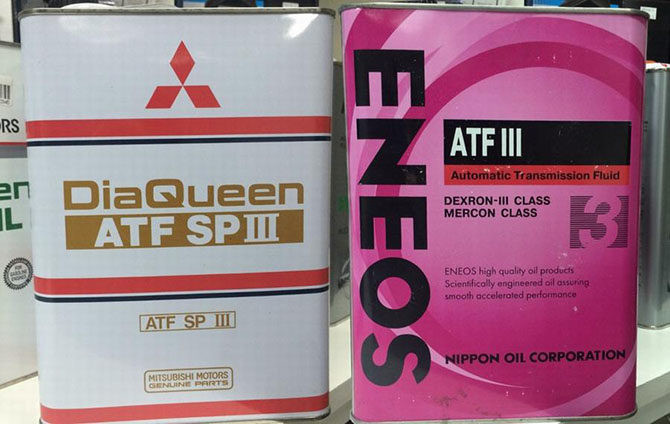
Manufacturers of automatic transmission fluids create a product not only according to Dextron specifications, but also according to other standards and tolerances:
- Korean ZIC ATF 3 (article 132632) is produced on its own oil with the addition of an additive package of the specification: Dextron III, Mercon, Allison C-4.
- ENEOS ATF Dexron II (P/N OIL1304) Dexron II, GM 613714, Allison C-4, Ford M2C 138-CJ/166H.
- Ravenol ATF Dexron D II (P/N 1213102-001) meets the requirements of ATF Dexron II D, Allison C-3/C-4, Caterpillar TO-2, Ford M2C 138-CJ/166H, MAN 339, Mercon, ZF TE- ML and others
A variety of technical characteristics indicates the use of oil in different techniques. At the same time, the parameters of the norms can be contradictory. So in the Ford M2C-33G, the coefficient of friction must increase with decreasing slip speed in order to change gears faster. GM Dextron III in this case aims to reduce friction and smooth transition.
Is it possible to mix transmission fluids of different composition
When Dexron mineral and synthetic gear oils are mixed, a chemical reaction occurs and impurities can precipitate out. The working properties of the liquid will deteriorate, which will lead to damage to the machine components.
Mixing different Dexron ATF standards with the same base will result in unpredictable additive response. In this case, it is permissible to add fluid to an automatic transmission of a later standard, that is, with ATF Dextron 2 filled in, ATF Dextron 3 can be used. On the contrary, it is impossible due to the insufficient effectiveness of modifiers.
If the equipment does not allow a decrease in the friction coefficient of the oil due to an increase in additives, then ATP Dextron 2 cannot be replaced with Dextron 3.
It is also worth considering the climatic region of residence. ATF Dexron II D is not designed for cold winters, therefore it is only suitable for the southern part of Russia and Europe. When moving to the northern regions, the automatic transmission fluid must be completely replaced with ATF Dexron II E or ATF Dexron 3.
Red, yellow and green liquids are poured into the power steering. Only yellow oil of the same base can be mixed with red ATF in power steering. For example, red mineral water Ravenol ATF Dexron DII art.1213102 and yellow mineral water Febi art.02615.
The best ATF Dexron fluids
The best Dexron 3 ATF fluids for power steering and automatic transmission, according to drivers and mechanics, are summarized in the table.
| number | Name, subject | Approvals and Specifications | Price, rub./l |
| а | Mannol "Dexron 3 Automatic plus", art. AR10107 | Dexron 3, Ford M2C 138-CJ/166-H, Mercon V, Allison TES389, Voith G607, ZF TE-ML. MB 236.1 | 400 |
| two | ZIK "ATF 3", art. 132632 | Allison S-4, Dexron III mercenary | 450 |
| 3 | ENEOS "ATF Dexron III", art. OIL1305 | Allison S-4, G34088, Dexron 3 | 530 |
| 4 | Mobile "ATF 320", art. 152646 | Dexron III, Allison C-4, Voith G607, ZF TE-ML | 560 |
| 5 | Repsol "Matic III ATF", art.6032R | Dexron 3, Allison C-4/TES295/TES389, MB 236,9, Mercon V, MAN 339, ZF TE-ML, Voith 55,6336 | 500 |
| 6 | Ravenol "ATF Dexron II E", art. 1211103-001 | Dexron IIE, MB 236, Voith G1363, MAN 339, ZF TE-ML, Cat TO-2, Mercon | 1275 |
| 7 | Universal oil Liqui Moly "Top Tec ATF 1100", art. 7626 | Dexron II/III, Mercon, Allison C-4, Cat TO-2, MAN 339, MB 236. Voith H55.6335, ZF TE-ML | 580 |
| 8 | Hyundai-Kia «ATF 3», art. 0450000121 | Dexron 3 | 520 |
| 9 | Motul "ATF Dextron III", art. 105776 | Dexron IIIG, Mercon, Allison C-4, Cat TO-2, MAN 339, MB 236.5/9, Voith G607, ZF TE-ML | 650 |
| 10 | Comma "ATF and PSF multicar", art. MVATF5L | Mercon V, MOPAR ATF 3&4, MB 236.6/7/10/12, Dexron(R) II&III, VW G052162 | 500 |
To improve the performance of automatic transmissions, additives are added when filling gear oil, for example, Liqui Moly. The additive is selected individually depending on the purpose of application: smooth gear shifting, increasing the elasticity of rubber bands, etc. The work of the additive is noticeable in worn-out automatic transmissions with noticeable malfunctions.
Whichever Dextron 3 for automatic transmission the driver chooses, the effectiveness of the oil depends on the frequency of service and the operating conditions of the vehicle. The ATP Dextron 3 in the power steering should also be replaced every 60 km or when it becomes dirty.
Conclusion
The best ATF 3 for automatic transmission and power steering will be the one recommended by the manufacturer of the car or mechanism. It is permissible to improve the properties of the liquid and fill in ATF 3 with a large amount of additives instead of ATF Dexron IID. Automatic transmission oil will last longer if you replace it with a new filter, flush the pan and clean the radiator.
